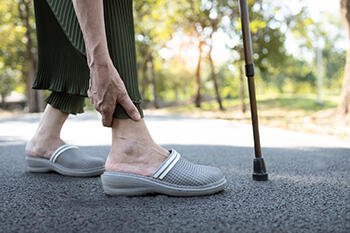
7 Ways To Prevent Athlete’s Foot
Have you ever had Athlete's Foot before? Then, you are probably well aware of the perilous itching and discomfort that it brings. Your feet, while not being the most sightly part of your body, get you where you need to go and help you live your best life. So, we’ve got to look after them, and one condition you’ve got to be on your guard about is Athlete’s foot because it can strike seemingly out of nowhere.
In this article, we’ll talk about what Athlete’s Foot is, what the symptoms are, what causes it and how to prevent it.
What is athlete’s foot?
Athlete's foot (tinea pedis) is a fungal infection on the skin that typically starts between the toes. People whose feet are generally very sweaty when wearing tight-fitting shoes will usually be the ones to contract Athlete’s Foot.
This condition is characterised by an itchy, scaly rash between the toes, which may spread to the rest of the foot. It’s caused by the same type of fungi (dermatophytes) that other fungal infections like jock itch and ringworm are caused by. It tends to thrive in areas like damp socks and shoes and warm and humid conditions.
Athlete’s foot is super contagious and can be spread through contact with contaminated floors, clothing and towels. So, when fighting the spread and trying to cure this uncomfortable condition, cleanliness is next to godliness. You’ll need to treat the infected area consistently with antifungal medications. This fungal infection is also notorious for coming back, so it’s important to know how to prevent it.
What are the symptoms of athlete’s foot?
Athlete’s foot is a fungal infection that can affect one or both feet, and the common symptoms of this condition can range from uncomfortable to painful, depending on the severity. Here are some of the symptoms to look out for:
- Scaly, peeling or cracked skin between your toes
- Dry, scaly skin on the bottom of the foot that extends up the side
- Itchiness, particularly when taking off shoes and socks
- Inflamed slightly red, purple or greyish skin
- Burning or stinging
- Blisters
Should you experience any of these symptoms and they don’t improve within two weeks of intial self-treatment (using an anti-fungal product), if you have diabetes or if the area looks infected (swelling, pus or if you have a fever) then it’s best to consult your your doctor for athletes foot treatment.
How to prevent athlete’s foot
Once you’ve experienced athlete’s foot, you’ll want to do everything you can to prevent it; likewise, for those who have never had it, you’ll do your best to avoid it. Here are some of the ways you can best prevent athlete’s foot:
Avoid walking barefoot
Fungal infections tend to pass easily between people, so to prevent it it’s best not to walk barefoot around areas with high foottraffick or moist areas where people have been sweating.
Wash your feet every day
It’s not the most exciting task, but none the less it needs to be done, not just to prevent athlete’’s foot but just for general hygiene. Not washing your feet mean any contaminants you’ve picked up throughout the day have time to ruminate, not to mention if you’re an active person your feet have probably been sweating. This creates an prime spot for athlete’s foot to grow.
Use warm soapy water and rinse your feet. The key is to dry your feet properly, ensuring you get between the toes. If you’re the kind of person who is prone to athlete’s foot, then finish off by applying a regular or medicated powder after you’ve dried your feet.
Let your feet get some air
At any given opportunity, choose to wear sandals or any kind of open-toed shoes to let your feet air out so they’re not stuck in moist, tight-fitting shoes day in and day out.
Always wear clean socks
A fresh pair of socks a day will help keep the athlete’s foot at bay. So, change your socks at least once a day unless your feet tend to sweat, and then it may be necessary to change them more. Some socks are better than others at preventing fungal infections, and moisture-wicking socks made from cotton will do a much better job than nylon socks.
Alternate pairs of shoes
We’ve all probably got a pair of favourite shoes, but alternating your shoes gives them time to dry properly after you’ve used them, especially those ones that make your feet a little sweaty.
Protect your feet in public areas
Athlete’s foot is super contagious, which means you need to take extra caution in public areas like the gym or clubs. Ensure you wear shower shoes or waterproof sandals around public showers, locker rooms and the pool.
Don’t share socks and shoes
Even with people you’re close to, if you want to avoid any chance of contracting athlete’s foot, avoid sharing socks and shoes, as well as unwashed bedding and towels.
Final Thoughts
Athlete’s foot is one annoying condition to get rid of, and due to the nature of this fungal infection, it’s quite easy to contract (especially in the gym and other public places). With good hygiene practices and taking these preventative measures to heart, hopefully, you won’t have to deal with it.